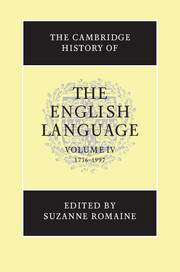4 - ONOMASTICS
Published online by Cambridge University Press: 28 March 2008
Summary
Preamble
The term proper name deserves some theoretical discussion, as it is not uncontroversial. For the purposes of this chapter, it can be understood in an entirely traditional way; but needs to be elucidated with great care when discussing the ways in which ordinary expressions of a language become proper names. I shall define the term as meaning a species of noun phrase intended, on a particular occasion of use, to achieve individual reference to some person, object, place, institution, etc. Proper names differ from other noun phrases in achieving such reference independently of the semantic characteristics of the words out of which they may appear to be constructed. In short, proper names have no sense (as defined by e.g. Lyons 1977: 197–206), or, to use the term taken from a tradition begun by J. S. Mill and used by Cecily Clark in the corresponding chapter of volume II, they have no connotation. The theoretical issues surrounding these remarks are dealt with more fully in a related paper (Coates 1990). The distinction between denotation and reference should be clearly maintained if confusion is to be avoided. Proper names are often said to be ‘names for individuals’; whilst it is true to say that they are typically used to refer to individuals (i.e. on particular occasions of use), it is quite false of the most typical ones to say that they denote individuals. For brevity, the word name will mean ‘proper name’ throughout.
The business of this chapter is to discuss English names (as defined above) since 1776. The English language has been used for onomastic purposes far outside its original heardand, most notably in formerly Celtic Britain, Ireland, the United States and Canada, the other former British Dominions, the surviving British colonies, to some extent in the New Commonwealth (especially the Caribbean islands), in Antarctica, and on the ocean floor.
- Type
- Chapter
- Information
- The Cambridge History of the English Language , pp. 330 - 372Publisher: Cambridge University PressPrint publication year: 1999
References
- 1
- Cited by

